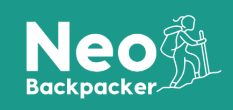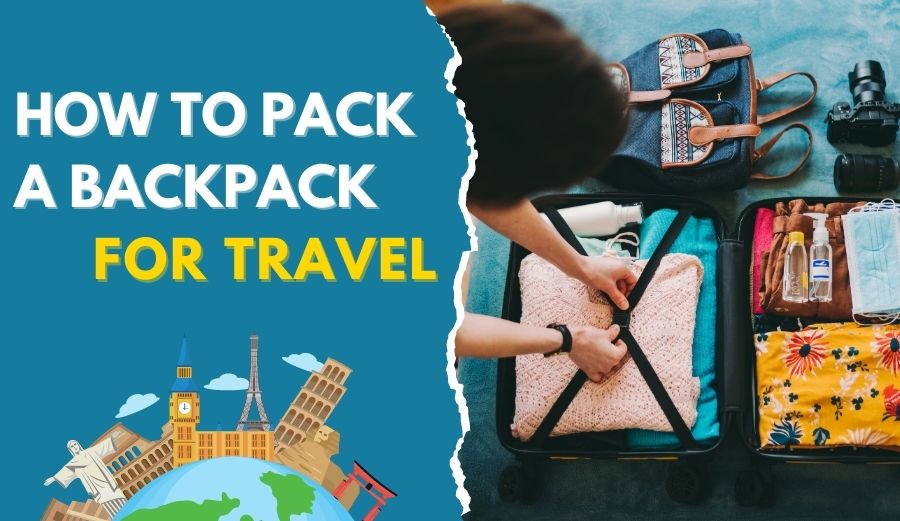Pack Smart, Explore More: Your Guide on How to Pack an External Frame Backpack
Prepare for seamless outdoor journeys. Knowing how to pack an external frame backpack ensures optimal weight distribution, comfort, and accessibility, enhancing your hiking and camping experiences.
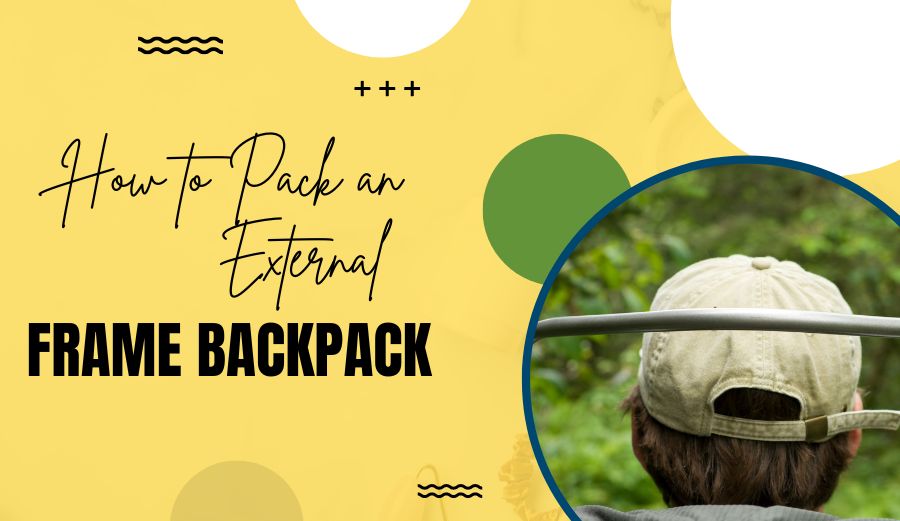
How to pack an external frame backpack: Are you tired of sore shoulders and aching backs after every adventure?
Ready to bid farewell to the frustrating jumble of gear inside your backpack? If you’ve been grappling with these challenges, it’s time to discover the transformative art of efficient packing.
Have you struggled to find that one essential item buried at the bottom of your bag? Have you felt like your backpack controls you more than you handle it?
In this guide, we’re not just showing you how to pack an external frame backpack; we’re giving you the key to reclaiming your comfort and sanity on the trail. Say goodbye to the days of haphazardly stuffing your pack and say hello to a new era of organized, enjoyable outdoor journeys.
Table of Contents
ToggleUnderstanding Your External Frame Backpack
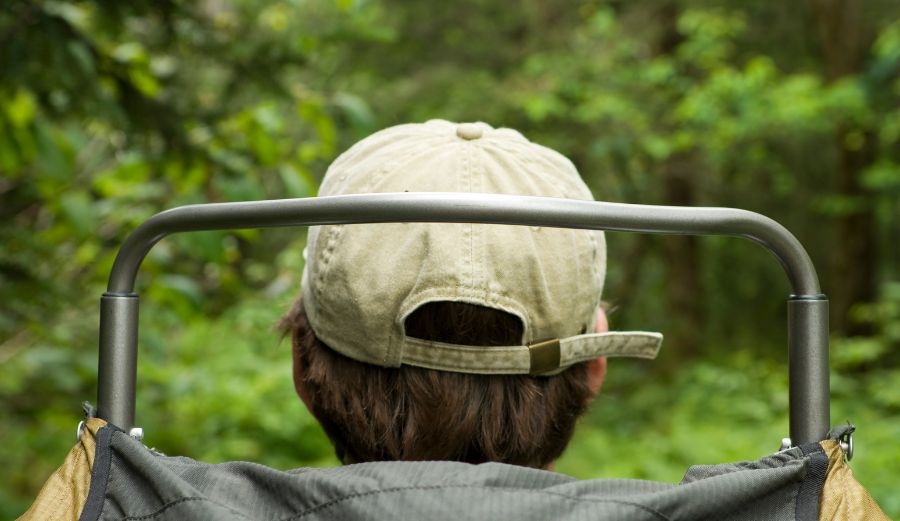
A Brief Overview of External Frame Backpacks and Their Advantages
External frame backpacks are a fusion of robustness and ventilation, offering outdoor enthusiasts a versatile gear-carrying solution. Their distinctive advantage lies in their exceptional weight distribution capabilities, making them a preferred choice for hauling substantial loads across extended treks. Unlike their internal frame counterparts, these packs maintain a gap between your back and the pack, promoting improved airflow and minimizing perspiration during arduous journeys.
Explanation of the Backpack’s Components and Features
Delving into the architecture of an external frame backpack reveals a synergy of elements that enhance its overall functionality. The backbone is the frame, often constructed from lightweight metals, ensuring structural integrity and resilience. Accompanying the frame is a sophisticated harness system encompassing adjustable shoulder straps, hip belts, and a sternum strap.
This configuration facilitates efficient weight transfer to the hips, stabilizing the load for a balanced hike. The backpack is fortified with external pockets and attachment points, providing supplementary space for essentials like water bottles, maps, and smaller tools.
Emphasizing the Importance of Familiarity with Your Specific Backpack Model
Unveiling your unique external frame backpack model’s intricacies is pivotal. Notable variations exist in features such as strap configurations and harness designs across different brands and models. Committing time to comprehend the nuances of your backpack not only ensures an ergonomic fit but also optimizes weight distribution and facilitates streamlined packing.
Your pack becomes an integral extension of your journey, and an intimate understanding of its design nuances contributes significantly to an expedition marked by comfort and satisfaction.
Decoding Backpacks: Internal vs. External Frames
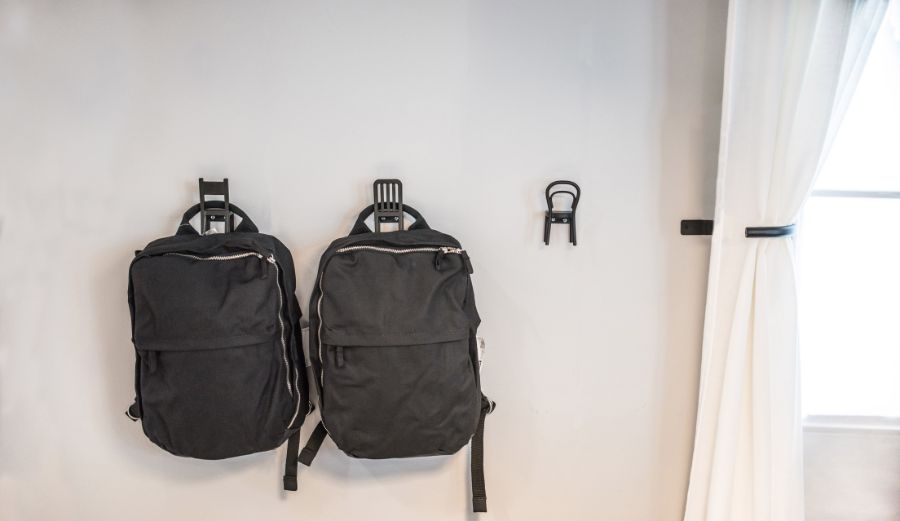
Backpacks are the adventurers’ best companions, but only some are equal. Let’s delve into the world of backpack frames and explore the key differences between internal and external frame backpacks.
Internal Frame Backpacks: Sleek and Streamlined
Internal frame backpacks are the stealthy ninjas of the hiking world. Their design features a built-in frame that contours to your back, providing a snug fit that moves with your body. This streamlined shape allows for better maneuverability in tight spaces and off-trail exploration. These packs excel in scenarios where balance and mobility are crucial, like steep ascents or navigating rocky terrain.
Advantages of Internal Frame Backpacks:
- Streamlined profile for better agility
- Ideal for dynamic terrains and off-trail exploration
- Closer weight distribution for enhanced balance
External Frame Backpacks: Classic Strength and Versatility
Step back in time with external frame backpacks, the classics that have stood the test of rugged adventures. These packs feature a visible frame on the outside, offering exceptional weight-carrying capacity and organization. Their distinct advantage lies in their ability to haul heavy loads comfortably over extended distances. With multiple attachment points, they’re perfect for lashing on gear, making them a top choice for backpackers with bulky or irregularly shaped items.
Advantages of External Frame Backpacks:
- Superior weight-carrying capacity for heavy loads
- Versatile attachment points for gear and equipment
- Enhanced ventilation due to the gap between the pack and the back
Choosing the Right Frame for Your Journey
When deciding between internal and external frame backpacks, consider the nature of your adventure. Internal frames shine in dynamic, fast-paced environments. In contrast, outer frames excel in hauling heavy gear and maintaining comfort over long distances. It’s all about matching the pack to the purpose, ensuring your journey is marked by efficiency and ease.
Ultimately, whether you opt for the sleek internal frame or the classic external frame, both styles have unique advantages. Your choice boils down to the type of adventure you’re embarking on and your personal preferences. So, gear up and hit the trail with a backpack tailor-made for your epic journey.
Embracing the Classic: When, Where, and Why to Opt for an External Backpack
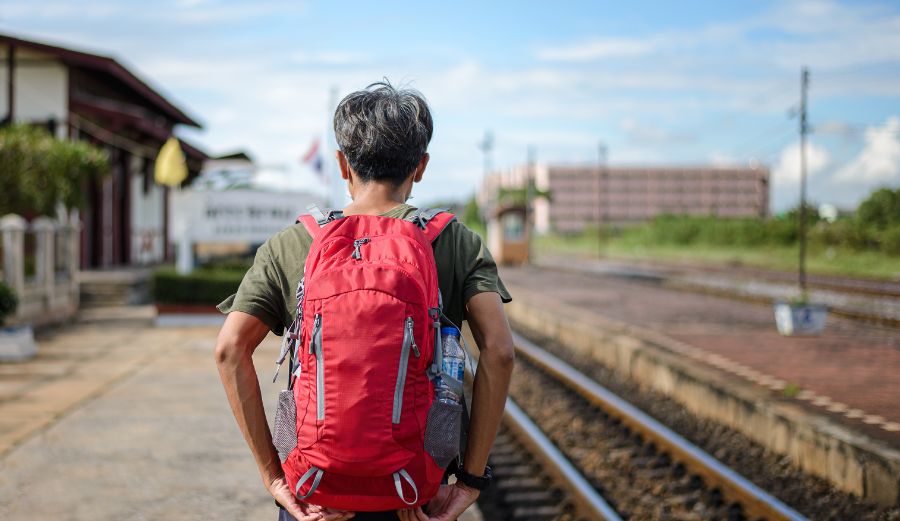
External backpacks, the time-tested companions of adventurers, bring a blend of nostalgia and practicality to the modern world of outdoor exploration. Let’s uncover the scenarios where these sturdy companions shine and why they are the perfect choice for your next escapade.
When to Choose an External Backpack
For Heavy Loads and Extended Trips: When your journey requires packing an array of gear, an external frame backpack steps in as the heavyweight champion. Its robust frame and ample storage capacity make it ideal for carrying substantial loads comfortably over days or weeks.
Rugged Terrain and Off-Trail Adventures: External backpacks come into their own when navigating challenging terrains. Suppose your path includes rocky ascents, bushwhacking, or any situation where balance and durability are paramount. Your best friend will be an external frame backpack’s stability in that case.
Where an External Backpack Shines
Backcountry Expeditions: Venturing deep into the backcountry demands gear versatility and resilience. With external attachment points, these packs allow you to easily carry essentials like tents, sleeping bags, and fishing gear.
Extended Hiking and Trekking: Embarking on long-distance trails or multi-day treks often involves varied weather conditions and changing landscapes. An external frame backpack accommodates these dynamic journeys’ extra clothing and equipment.
Why Choose an External Backpack
Exceptional Weight Distribution: The external frame’s design offers superb weight distribution. This means less strain on your shoulders and better overall comfort, which is especially crucial for arduous hikes.
Ventilation and Airflow: The gap between your back and the pack creates airflow, keeping you more relaxed during hot hikes and reducing that dreaded “sweaty back” feeling.
Organized Packing: External backpacks provide multiple attachment points and external pockets, allowing you to manage and access gear efficiently without digging through the main compartment.
Selecting Your Perfect Outdoor Companion
Ultimately, whether tackling a challenging trail or embracing a lengthy expedition, the choice between internal and external backpacks hinges on your unique needs. The external frame backpack proves worth for heavy loads, rugged terrain, and backcountry journeys. So, you’re seeking a blend of classic strength, organization, and versatility. In that case, the external backpack is the ideal partner for your next grand adventure.
Setting the Stage: Preparing for Packing
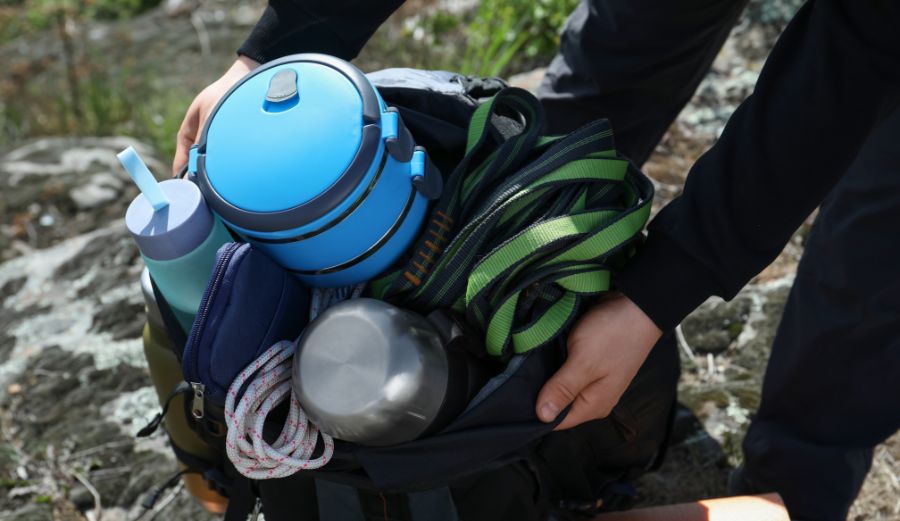
Packing for an adventure is more than just throwing gear into a backpack. It’s a strategic dance between your destination and your essentials. Before loading up, break down the essential steps to ensure you’re fully equipped for your journey.
Assessing Your Trip’s Requirements
Duration Matters: Consider the duration of your adventure – whether it’s a weekend getaway or a week-long expedition. The length of your trip influences the amount of gear you need to pack.
Climate Considerations: Check the weather forecast for your destination. Will you encounter rain, snow, or scorching heat? Dressing appropriately is vital for comfort and safety.
Terrain and Activities: Is your route rocky, steep, or smooth? Are you hiking, camping, or both? Tailor your gear selection to the specific terrain demands and activities you’ll engage in.
Making a Detailed Checklist
The Necessities: Create a comprehensive checklist of essential items. Start with a tent, sleeping bag, clothing, and food. Then, add specific items based on your trip’s requirements.
Personal Care and Safety: Remember personal care items like a first aid kit, sunscreen, and insect repellent. Safety essentials like a map, compass, and multi-tool should also make the list.
Tech and Gadgets: Depending on the trip, you might need electronics such as a GPS, headlamp, or camera. Ensure you have the necessary batteries, chargers, and protective cases.
Gathering and Organizing Gear, Clothing, and Essentials
Layout and Layover: Lay out all the items on your checklist before packing. This visual assessment helps you confirm you have everything and prevents last-minute scrambling.
Organizing by Zones: Divide your backpack into sections – main compartment, external pockets, and attachment points. Organize gear by purpose: cooking equipment in one area, clothing in another, and tools in a separate bag.
Compression and Protection: Utilize packing cubes or dry bags to compress clothing and maximize space. Place fragile items in protective cases or cushion them with a dress to prevent damage.
Ready to Conquer Your Journey
By methodically assessing your trip’s needs, crafting a detailed checklist, and meticulously organizing your gear, you’re setting yourself up for a seamless adventure. Each item you pack should serve a purpose and contribute to your comfort and safety. So, take a deep breath, check off each item, and embark on your journey with the confidence that comes from thoughtful preparation.
Equipped for Success: Strategic Gear Selection
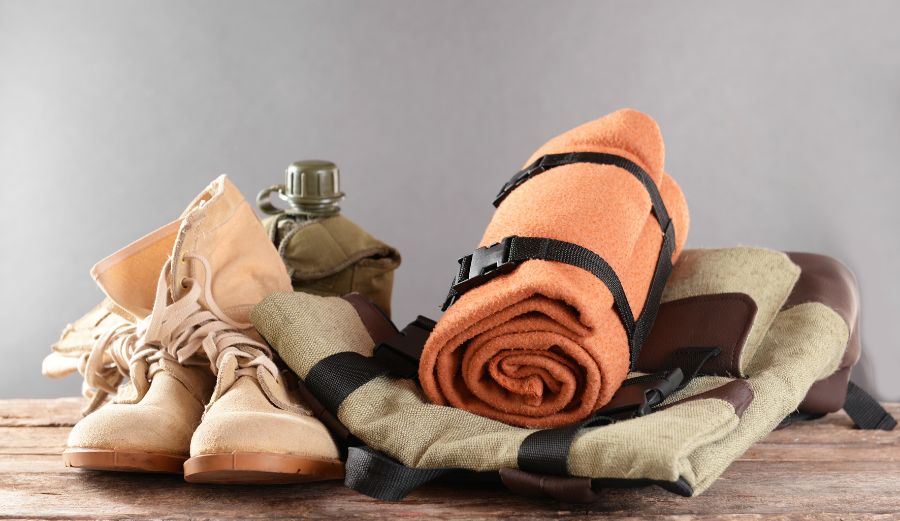
Your adventure’s success hinges on the gear you carry. The art lies in selecting items that balance necessity and weight perfectly. Get ready to make informed choices that elevate your journey by mastering the art of strategic gear selection.
Prioritizing Essential Items and Avoiding Overpacking
Needs vs. Wants: Begin by distinguishing between essential items and those you might desire but can do without. Prioritize things like food, water, shelter, and navigation tools.
Multi-Purpose Gems: Opt for gear that serves multiple purposes. For instance, a versatile jacket offering warmth, wind resistance, and rain protection can replace various garments.
Limiting Luxuries: Avoid overpacking by leaving behind non-essential luxury items. Remember, every extra pound adds up over miles of hiking.
Choosing Lightweight and Versatile Gear Options
The Weight Factor: Lighter gear means less strain on your body. Choose lightweight items like sleeping bags, cooking utensils, and clothing without compromising quality.
Space-Saving Solutions: Look for collapsible or compressible gear. This includes cookware, utensils, and even compact sleeping mats that save space in your backpack.
Streamlined Footwear: Opt for lightweight, comfortable, and durable footwear that suits the terrain. A good pair of hiking shoes can go a long way in ensuring comfort during your journey.
Consideration for Specialized Equipment Based on the Trip’s Nature
Adapting to Terrain: Tailor your gear to the specific challenges of the terrain. Crampons for icy conditions, trekking poles for steep ascents, or a climbing harness for rugged trails – specialized equipment ensures safety and efficiency.
Environmental Factors: If you’re heading into extreme environments, invest in gear designed to withstand the conditions. Waterproof and insulated clothing, for instance, is essential for cold, wet conditions.
Activity-Centric Gear: Different activities require different gear. Whether it’s fishing, photography, or bird watching, ensure you have the tools and equipment to enjoy the experience fully.
Mastering the Gear Game
Strategic gear selection is a blend of pragmatism and efficiency. It’s about choosing items that fulfill vital roles, reduce load, and enhance your overall experience. By opting for essentials, embracing versatility, and factoring in specialized equipment, you’re equipping yourself for a journey that’s as streamlined as it is satisfying. So, gear up wisely, and let the adventure unfold with gear tailored to your every need.
Mastering Balance: Weight Distribution and Load-Bearing
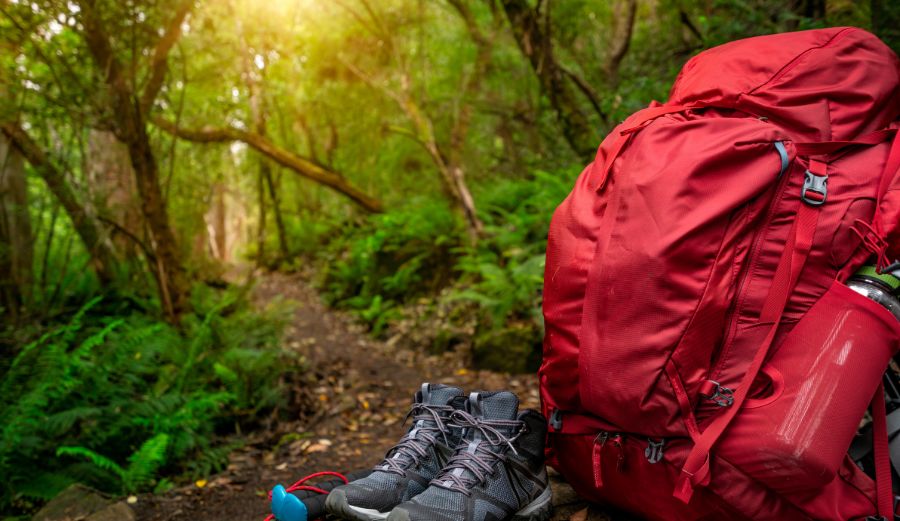
Achieving a balanced load is the key to a comfortable and enjoyable outdoor adventure. Let’s unravel the art of weight distribution in your external frame backpack, ensuring you can go the distance without strain.
Understanding the Concept of Weight Distribution
The Pendulum Effect: Imagine your backpack as a pendulum – it should sway gently, not drag you back. Weight distribution ensures the load is evenly spread so you’re not leaning forward or backward.
Impact on Posture: Proper weight distribution maintains your natural posture, preventing strain on your back, shoulders, and hips. An unbalanced load can lead to discomfort, fatigue, and even injury.
Strategically Placing Heavier Items at the Bottom and Closer to Your Back
Low and Central: Position heavier items at the bottom and near your back. This keeps the center of gravity down, providing stability and balance.
Balancing Act: Placing heavier items high up can lead to a top-heavy backpack, causing you to lean forward. Keep the most severe things closer to your body’s centerline to avoid this.
Core Comfort: Distributing weight around your core minimizes strain on your back muscles, ensuring you can hike longer without fatigue.
Distributing Weight Evenly Between the Main Compartment and External Pockets
Main Compartment Priority: Load the main compartment first with items you will only need once you stop for a break or set up camp. This ensures the bulk of the weight is closest to your back.
External Pocket Strategy: Use exterior pockets for items you need quick access to, like snacks, a rain jacket, or a map. Distribute these lighter essentials across bags to prevent imbalances.
Attachment Point Awareness: Be mindful of attachment points like loops or daisy chains. Distribute gear evenly on these points to avoid lopsidedness.
Balancing Your Adventure
A well-distributed load transforms your backpack into a seamless extension of your body. Understanding weight distribution, strategically placing heavier items, and ensuring even weight between compartments and pockets set the stage for a comfortable and easy journey. So, let your backpack be a partner that complements your movements, and step confidently into the great outdoors, knowing you’ve mastered the art of load-bearing balance.
Efficiency Unleashed: Organizing the Main Compartment
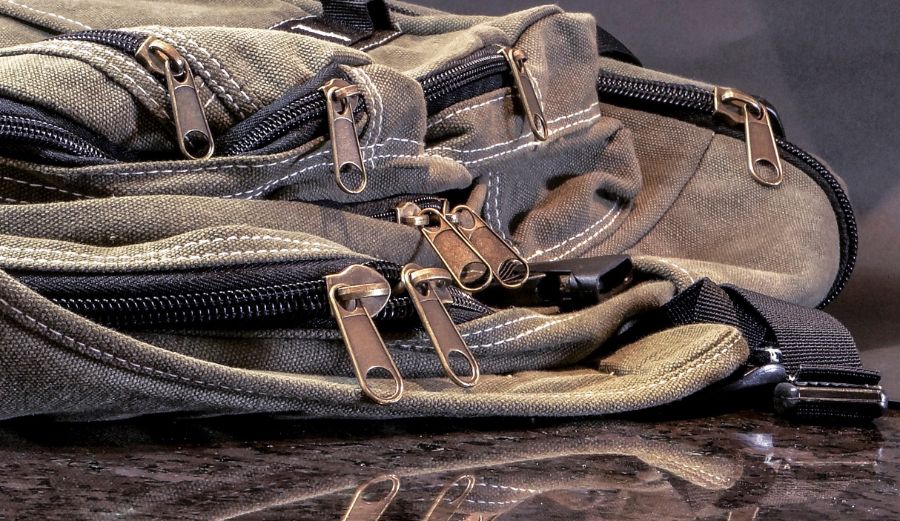
The main compartment of your backpack is like a puzzle waiting to be solved. With thoughtful organization, you can maximize space, ensure easy access to essentials, and optimize your overall packing experience. Let’s dive into the art of organizing your main compartment.
Using Packing Cubes or Dry Bags for Categorization and Compression
The Cubes’ Magic: Packing cubes or dry bags are your secret weapons for the organization. Group items like clothing, gear, and gadgets into separate cubes. This not only categorizes your equipment but also compresses them, saving space.
Ease of Retrieval: Imagine finding your socks without sifting through an abyss. Packing cubes make specific items accessible without turning your backpack into a jumble.
Protection Plus: Dry bags offer extra protection against rain and dampness, keeping your gear safe and dry even in challenging weather.
Placing Frequently Needed Items at the Top for Easy Access
Top Tier Essentials: Items you’ll use frequently, like snacks, a rain jacket, or a camera, should reside at the top. This eliminates the need to dig deep when you need them urgently.
Streamlined Breaks: Swift access to essentials ensures you can take quick breaks without disrupting your flow. Snack breaks or capturing a stunning view become effortless.
Weight Distribution: Placing lighter items at the top maintains a balanced load, preventing top heaviness and unnecessary strain on your shoulders.
Storing Sleeping Bags, Clothing, and Other Bulkier Items Efficiently
Bottom Line Comfort: Position your sleeping bag at the bottom of the main compartment. This is a cushion for your back, and its bulk won’t interfere with other gear.
Clothing Strategy: Roll your clothes to save space and prevent wrinkles. Place them on the sleeping bag or packing cubes to keep everything organized.
Layering Logic: Stack bulkier items vertically along the sides. This prevents a lumpy appearance, ensuring your backpack is streamlined and comfortable.
A Symphony of Order
The main compartment is where order transforms into efficiency. You’re composing a symphony of organized harmony by using packing cubes, strategically placing frequently needed items, and arranging bulkier items carefully. Say goodbye to frantic searches and disarray – with a well-organized main compartment, your backpack becomes an oasis of accessibility and ease during your adventure.
Beyond the Mainstage: Utilizing External Pockets and Straps
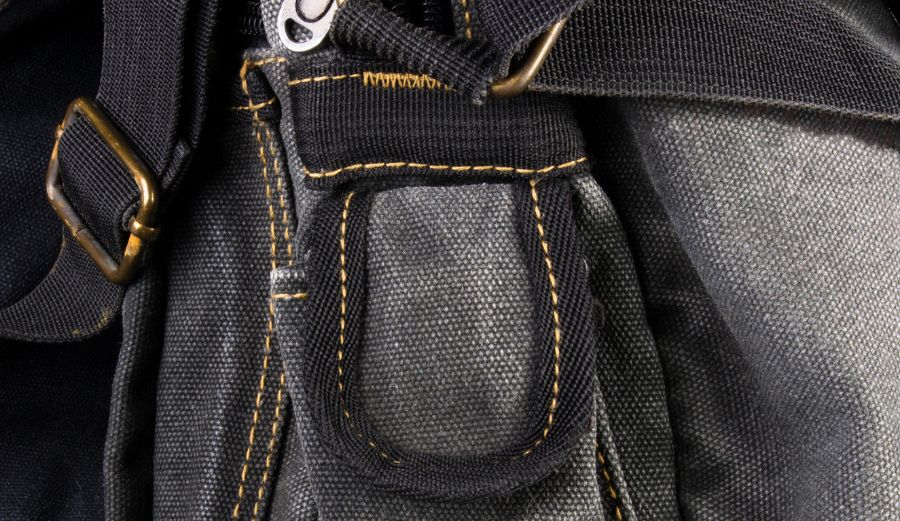
Your backpack’s external pockets and straps are like stage wings, ready to showcase your gear and offer convenience. Master the art of utilizing these features to make your journey smoother, organized, and hassle-free.
Maximizing the Use of External Pockets for Quick Access Items
Pocket Prioritization: External pockets are your on-the-go treasure chests. Assign each pocket a purpose – snacks, a map, sunscreen – so you can retrieve essentials without halting your momentum.
Top-to-Bottom Hierarchy: Organize pockets based on frequency of use. Items you need frequently go on top, while those required less often can reside at the bottom.
Distribute the Load: Ensure an even distribution of items across pockets to prevent your backpack from becoming lopsided and affecting your balance.
Securing Trekking Poles, Water Bottles, and Other Gear with Exterior Straps
Strap It Up: External straps are versatile tools for securing gear. Trekking poles, a water bottle, a tent, or a sleeping pad can be lashed to your backpack’s exterior, freeing up space inside.
Balanced Arrangement: When using straps, distribute weight evenly on both sides to prevent an uneven load. This ensures your backpack maintains its stability and comfort.
Befriending Bungees: Some backpacks have bungee cords – these are excellent for quickly stashing an extra layer or temporarily securing gear without opening the main compartment.
Demonstrating Proper Techniques to Avoid Unbalanced Loads
Symmetrical Load: Balance is your mantra. Distribute weight evenly between pockets and external gear to prevent the dreaded wobble or sway as you hike.
Stability Check: Ensure that items attached to the exterior are well-secured and won’t swing or shift while you move. Loose gear can throw off your balance.
Stay Streamlined: Straps should be tight enough to secure gear but not so close that they compress the backpack’s structure. Maintain a balanced distribution of weight to prevent discomfort.
A Balanced Symphony of Efficiency
External pockets and straps are the orchestra of convenience, playing in harmony with your journey. By maximizing pocket usage, securing gear with straps, and maintaining balanced loads, you’re crafting an efficient symphony of organization and ease. Each external feature becomes a note in the melody of your adventure, enhancing your experience and allowing you to conquer trails with style and grace.
Guardians of Fragility: Protecting Your Delicate Gear

In the rugged world of outdoor exploration, fragile gear needs extra care. Learn to safeguard your precious electronics and delicate equipment to ensure the journey with you unscathed through every adventure.
Using Protective Cases for Electronics, Cameras, and Other Delicate Gear
Armor Up: Protective cases are the knights in shining armor for your delicate gadgets. They shield electronics, cameras, and other fragile gear from impacts, moisture, and dirt.
Layer of Security: Utilize padded cases to encapsulate your gear within layers of protection. Foam interiors or specialized topics are designed to cushion against shocks.
Size Matters: Choose cases that snugly fit your gear. A well-fitting case prevents movement within, reducing the risk of damage during transit.
Creating Cushioned Compartments Using Clothing or Padding Materials
Soft Nests: Clothing can be your gear’s best friend. Wrap delicate items in soft garments like a sweater or scarf to create a cushioned compartment within your backpack.
Clothing Puzzle: Place clothing strategically around your gear to prevent them from knocking against each other. The goal is to create a snug, padded environment.
DIY Padding: Cut and customize foam or padding materials for odd-shaped items to create bespoke protection within your backpack.
Ensuring Secure Placement to Prevent Items from Shifting During the Hike
Stabilize and Secure: Fragile gear shouldn’t dance around in your backpack. Use straps or compression bands to secure compartments and prevent equipment from shifting during your hike.
Pack Like a Puzzle: Place delicate items in the center of your backpack, surrounded by soft padding. This minimizes the risk of impacts from the sides or bottom.
Test Your Setup: Give your backpack a gentle shake before hitting the trail. Readjust and secure your gear if you hear clinking or feel movement.
Embark with Confidence
Your delicate gear deserves a VIP experience, even in the wild. By using protective cases, crafting cushioned compartments, and ensuring secure placement, you’re transforming your backpack into a sanctuary of safety. As you journey through the great outdoors, rest assured that your fragile items are shielded from the elements and ready to capture every moment without worry.
Conquering Rain and Weather: Navigating Wet Adventures
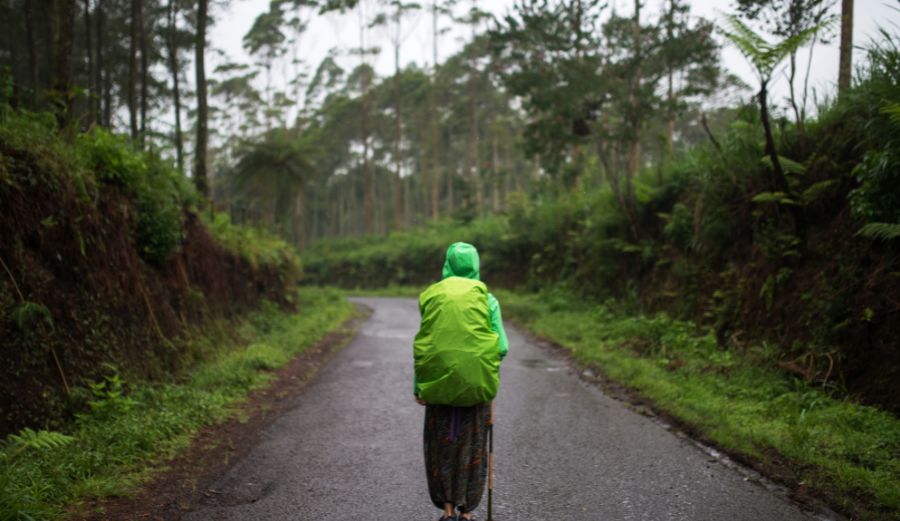
Nature’s beauty is often accompanied by unpredictability. Learn the art of weatherproofing your gear to ensure your journey remains enjoyable, even when the skies open up.
Employing Waterproof Covers or Dry Sacks to Shield Your Gear from Rain
Shielding Armor: Waterproof covers or dry sacks are your gear’s ultimate armor against rain. They form a protective barrier, preventing moisture from seeping into your backpack.
Strategic Application: Use waterproof covers for the entire backpack, shielding it from top to bottom. Alternatively, pack gear inside individual dry sacks for enhanced protection.
Layer of Security: Even if your backpack claims to be water-resistant, a waterproof cover adds an extra layer of defense against torrential downpours.
Storing Gear and Extra Clothing in Easily Accessible Areas
Quick-Draw Rain Gear: Stash your rain jacket or poncho in an external pocket for swift access. You won’t need to dig deep into your backpack when the rain starts.
Dry-to-Wet Transitions: Keep your rain gear handy but separate from other items. Wet gear can be isolated and will keep your other belongings intact.
Organized Convenience: If you anticipate frequent weather changes, dedicate an external pocket for rain gear. This keeps it easily accessible without disrupting your packing organization.
Incorporating Rain Covers for Both the Backpack and Individual Compartments
Complete Coverage: Invest in a rain cover designed explicitly for your backpack. It provides comprehensive protection for the entire pack, including external pockets.
Compartmentalized Care: Some backpacks come with built-in rain covers for specific compartments. These add an extra layer of protection to sensitive items, like electronics or documents.
Peace of Mind: Rain covers ensure your gear remains dry, eliminating the fear of soaked clothes, damp sleeping bags, or waterlogged electronics.
Conquer the Elements, Enjoy the Journey
Rain and adverse weather don’t have to dampen your spirits. By employing waterproof covers, stowing rain gear smartly, and incorporating rain covers, you’re arming yourself against Mother Nature’s surprises. With your bag well-protected, you can embrace wet adventures without hesitation, knowing that your belongings will stay dry and your journey will remain undeterred.
The Perfect Fit: Proper Adjustment for Backpack Bliss
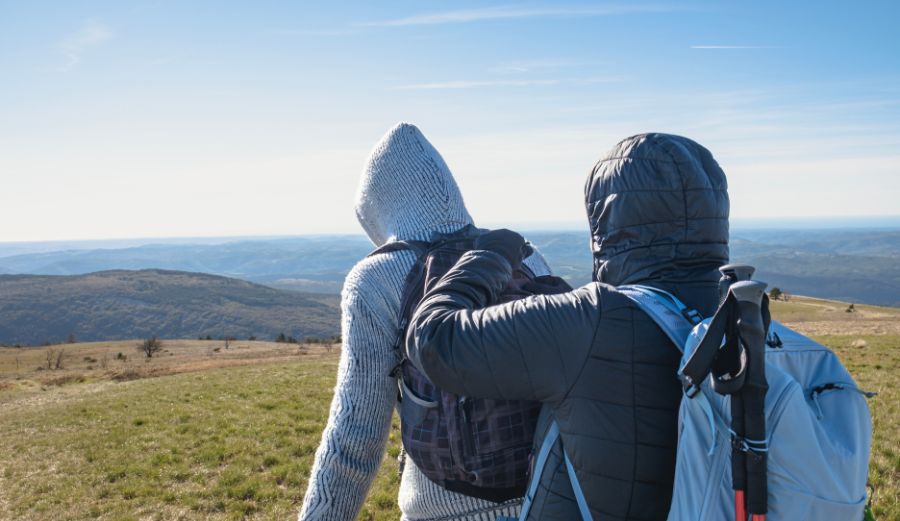
Your journey’s comfort begins with a well-fitted backpack. Let’s explore the art of adjusting your backpack’s straps to ensure you can conquer trails without discomfort.
Adjusting the Backpack’s Shoulder Straps, Hip Belt, and Sternum Strap
Shoulder Straps: Begin with the shoulder straps. Adjust them so they rest comfortably on your shoulders, not digging in or creating excessive pressure.
Hip Belt: Secure the hip belt around your hips, not your waist. Tighten it enough that most of the backpack’s weight is supported by your hips, not your shoulders.
Sternum Strap: The sternum strap adds stability and prevents shoulder straps from sliding off. Adjust it to a snug but not constrictive position across your chest.
Achieving a Comfortable and Snug Fit for Reduced Strain and Fatigue
Hip Hug: A well-adjusted hip belt transfers the backpack’s weight to your hips, your body’s natural load-bearing area. This reduces strain on your shoulders and enhances overall comfort.
Shoulder Bliss: Your shoulder straps should comfortably hug your shoulders without digging in. Straps that are too loose can lead to swaying and discomfort.
Goldilocks Test: The fit is suitable when your backpack feels like an extension of your body, allowing you to move naturally without hindrance.
Regularly Reassessing the Fit Throughout Your Journey
Dynamic Adjustments: As you hike, your body and clothing layers may shift. Regularly assess and fine-tune the fit to maintain optimal comfort.
On-the-Go Optimization: Adjust during breaks to ensure your backpack remains snug and balanced as you continue your journey.
Happy Shoulders, Happy Hike: An adequately adjusted backpack is your ally against fatigue and discomfort. Regular reassessment ensures that your bag remains a comfortable extension of your body, accompanying you seamlessly on your adventure.
Stride Confidently, Backpack in Harmony
A well-adjusted backpack transforms your journey into a comfortable stride. By mastering the art of fitting your bag, you’re giving yourself the gift of reduced strain, better weight distribution, and the freedom to confidently tackle trails. So, strap in, adjust smartly, and step into the great outdoors, knowing your backpack is tailored to your body’s every contour.
Embark on Your Adventure: A Final Note

As you stand on the threshold of your outdoor escapade, armed with newfound knowledge, it’s time to embrace the art of packing an external frame backpack. Let’s recap the key points that will elevate your journey.
Recap of Key Points
We’ve explored the strategic steps to pack your external frame backpack:
- Understanding Your Backpack: Know your gear inside out for a comfortable fit and efficient packing.
- Organizing with Precision: Use compartments, pockets, and straps wisely to optimize organization.
- Balance and Weight Distribution: Master the art of weight distribution for a stable and comfortable hike.
- Protection and Weatherproofing: Shield fragile gear and prepare for changing weather conditions.
- Fitting and Adjustment: Achieve a personalized fit to minimize strain and maximize comfort.
The Trail to Enjoyment: Benefits of Efficient Packing
Efficient packing isn’t just a practical skill; it’s a gateway to a more enjoyable outdoor experience. With a well-organized backpack, you move quickly, access essentials effortlessly, and focus on the beauty of your surroundings. The right gear in the right place allows you to immerse yourself fully in the journey.
Your Adventure Awaits: Apply and Share Your Success
Now, armed with these techniques, it’s your turn to implement them. Apply what you’ve learned, fine-tune it to your preferences, and embark on an adventure of comfort and excitement. Share your successes with fellow adventurers, inspiring them to embark on their journeys with the same confidence.
Embrace the Journey, Tailored to You
As you venture into nature’s embrace, remember that your external frame backpack is not just a piece of gear – it’s an ally that carries your essentials, shields your treasures, and supports your every step. The art of packing is an evolving process you’ll refine with each adventure. So, pack thoughtfully, trek confidently, and make memories that will last a lifetime. Safe travels!
For more tips and guides on outdoor adventures and backpacking, remember the primary keyword: “How to pack an external frame backpack.” Happy exploring!
FAQs
Yes, external frame backpacks are suitable for long trips due to their excellent weight distribution and capacity.
Adjust the shoulder straps, hip belt, and sternum strap to achieve a comfortable and secure fit.
Yes, the external frame design excels in carrying heavy loads, making it ideal for extended outdoor expeditions.
It’s best to hand wash your backpack using mild soap and water. Avoid machine washing to prevent damage.
While external frame backpacks are versatile, they are most commonly used for hiking, camping, and backcountry trips.
